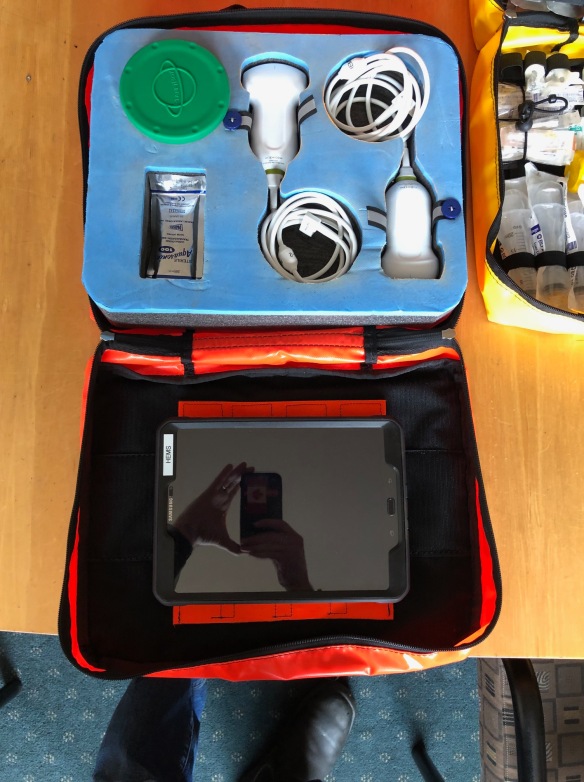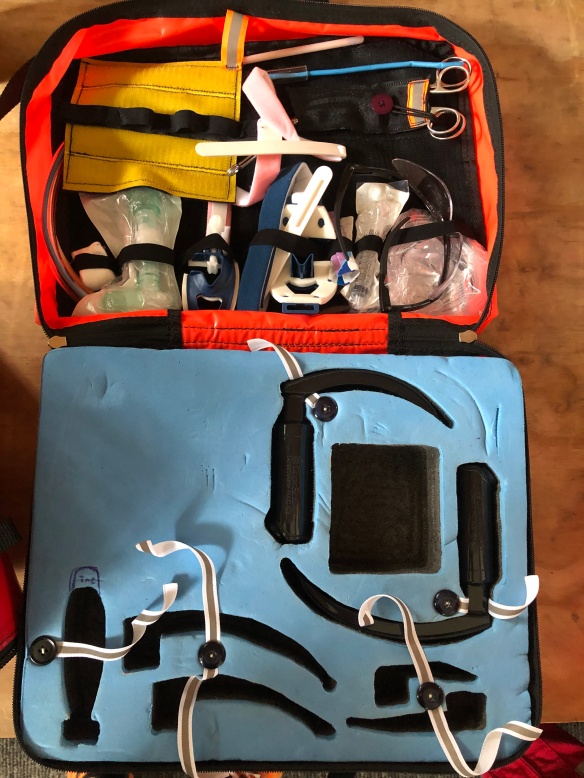




iSimulate’s latest product – REALITi – has landed at ARHT!
This device gives us the ability of easy video debriefing and full, self-contained portability for our simulations.
If you’re interested in our training videos for REALITi – click here
We’re using the video to facilitate debriefing of not only medical events, but also to critique communication of our in-house winch simulator. This particular sim ran over 2 hours, including a rescue swim / patient retrieval, drowning / trauma resuscitation of multiple patients, through to packaging the patient and then winching into the helicopter winch simulator 25 feet off the ground.
You can also see what the video debriefing looks like – with full vital signs overlaid during this airway burn / surgical airway simulation.
Overall, we’re really happy with the extra capability this unit brings, and we’ll continue to push the limits of fidelity when we’re not doing the real thing!
We are big fans of mechanical CPR at ARHT, but would consider ourselves pragmatists. Outcomes in out of hospital cardiac arrest (OHCA) are poor overall, and studies of mechanical CPR fail to show benefit. So why are we talking about it?
In our machine, effective CPR is very difficult to perform. We attend a handful of calls every year where a patient arrests during assessment or transport, and our LUCAS can act as a bridge to other therapies. We are a fast-moving, deployable asset with the skills and technology to deliver critical care and circulatory support at the roadside – and our mission is saving lives.
Read on to understand our vision for cutting edge arrest care in New Zealand, and why mechanical CPR at ARHT is the first step.
Mechanical CPR machines have been around for a number of years now, and have been studied up, down and sideways to figure out how we should be using them to replace human CPR.
The key studies for background are LINC (2013) and PARAMEDIC (2015), plus Li’s systematic review (2016).
Undeterred by the believability that mechanical CPR would free up rescuers to do other important actions, patients with manual CPR were defibrillated, intubated, transported and at hospital faster than those in the mechanical CPR groups.
Specifically, even with training, patients were defibrillated 1.5-2 minutes LATER in the mechanical group.
Perhaps it may be no surprise to you, then, that the purported benefits of hands-free CPR have yet to materialize into measurable patient oriented outcomes in these big studies. The CPR must be a bridge to more definitive therapy, and our helicopters can get patients there.
At ARHT we consider the LUCAS as the ‘life support’ while we are searching for and treating the cause of arrest, and while transporting them to hospital. The aeromedical analogy is having one pilot keep the helicopter in the air while the other diagnoses the problem or navigates to safety.
Enter the CHEER study from 2015.
This was a small study with a big idea. The letters stand for CPR (mechanical), hypothermia, ECMO and early revascularization. Mechanical CPR here is merely part of a series of interventions best thought of as the chain of survival, and indeed this is the best way to view it.
They laid out a set of criteria similar to the ones proposed by Gareth, which you may have read in your email.
On the whole, these are targeted to find people who should have good outcomes – with a likely treatable cause and favourable arrest characteristics of bystander CPR and initial VF.
Importantly, these are patients in refractory arrest, defined as >30 minutes. These are patients that we would typically cease efforts on prehospital, and indeed many patients were under 40 minutes of CPR which is when many of us in hospital would also cease.
So, they ID’d patients, brought the CPR device, gave them ~2L ice cold saline and raced to the hospital to be put on ECMO and then to the cath lab. This is extremely heroic – or at least it seems that way until you see the numbers.
What they found is a startlingly high success rate. Over approximately 3 years they enrolled 26 patients (9 OHCA), and got rosc in 25, and 14 patients (54%) survived to hospital discharge with CPC 1/2 outcome. Specifically, 3/9 OHCA patients.
For context, St John does publish survival rates on similar patients which have been steady at 30% the past three years, with no mention of neurologic status. Additionally, with some digging one sees that only 2% of patients are transported under CPR – they get ROSC on scene or are called on scene.
If we apply CHEER thinking and find these patients in refractory arrest, imagine saving 1/3 of these patients that you could see at the grocery store. This is where our capability with the LUCAS comes in, and where we’ll be doing work with the interventional cardiologists and CV ICU doctors to decide on what to do next.
We have just received our new LUCAS-3 mechanical CPR device

It’s an incredibly user friendly piece of equipment. Check out these training videos that Emily and Stefan made. You will need to be formally signed off for it’s use – contact Stefan to arrange this next time you are on base.
At our next clinical governance meeting, Sean Fair will be discussing the operational indications for it’s use prehospital, referencing the CHEER trial